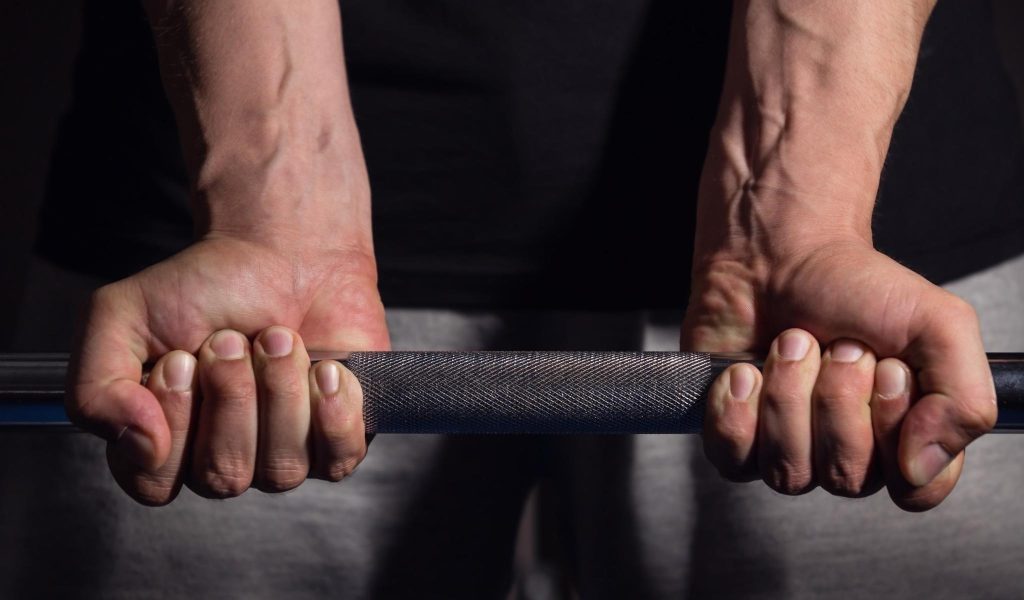No products in the cart.
Should you lift heavy or light weights?

What is the reason why you lift weights in the first place? For most people it is for one of three reasons 1) to build bigger muscles (Hypertrophy) 2) to increase strength or 3) to lose weight.
This article will look at each desired result and decide whether heavy weights or light weights will be best suited to the task.
Before we do any of that however we need to take a quick look at how muscles work, and the role that muscle protein synthesis plays in both building size and strength. Because if you don’t understand how it works, you won’t understand why.
Anatomy of Muscles
Your muscles are made up of muscle fibres, there are Type I and Type II (and also Type IIa but let’s keep it simple).
The two fibre types are known as fast twitch and slow twitch.
Type I fibres are slow twitch which means that they are responsible for endurance-based exercise. Type II fibres are fast twitch which means that they are responsible for fast explosive movements.
Building strength and hypertrophy is all about increasing the size of muscle fibres, Type II fibres are known to be the easier fibre to grow so a lot of gym-goers prioritise training fast-twitch over slow twitch. But slow twitch (Type I) fibres are still necessary for increasing size so should not be ignored [1].
Muscle Protein Synthesis
Whenever you contract a muscle you damage the fibres slightly, this is known as muscle damage.
It may sound like a bad thing but muscle damage is essential for growth. Incidentally it is now believed that Delayed Onset Muscle Soreness (DOMS) is caused by muscle damage, so can be an indication of hypertrophy [2].
Your body will look to repair these damaged muscle fibres using protein stored in the body to do this job. This is known as Muscle Protein Synthesis.
MPS will not only repair the damaged muscle fibres but it will make them stronger and larger (it increases their cross-sectional area).
This is why protein is so important to gym-goers who are exercising, and why athletes require twice as much protein per day as sedentary folk [3].
There are other factors that can increase muscle protein synthesis such as the amount of testosterone and growth hormone that is released post-exercise.
Certain exercises can increase the amount of testosterone and growth hormone that are released, particularly free weights compared to resistance machines [4]. So before we go into heavy versus light weights we should also pay attention to exercise selection.
Performing the perfect sets and reps with the perfect weight will mean squat if you’re doing it on an ab crunch machine, when you should be performing deadlifts.
Heavy or Light Weights for Hypertrophy
Fink et al (2016) looked into whether high loads, low loads, or mixed loads resulted in improved hypertrophy.
They split twenty-one participants into three groups of seven. One group would perform eight to twelve reps of an exercise using a heavy weight (80% of 1RM). The second group would perform thirty to forty reps of an exercise using a light weight (30% of 1RM), whilst a third group would perform heavy weighted exercises for two weeks, followed by light weights for two weeks, repeated on and off for eight weeks.
After eight weeks all three groups showed significant increases in muscle cross-sectional area, meaning that hypertrophy increased.
There was however no difference between the three groups. They concluded that so long as a person trains to failure, there is no difference in hypertrophy when using heavy, light, or mixed weights [5].
Brad Schoenfeld found that the best approach for hypertrophy is to vary your program, use high reps sometimes and low reps at other times.
He recommends matching exercises to reps and weights. For example big exercises like squats and deadlifts would suit low reps and heavy weights, whilst isolation exercises such as cable flyes might be better suited to higher reps. Or possibly higher reps in one session and lower reps in another session.
He also states that drop sets following a heavy weight/low repetition set could be the perfect solution.
This is because the low reps and heavy weight will exhaust the Type I fibres, but then the drop set to failure will exhaust the Type II fibres leading to greater muscle activation. Which means greater muscle damage, which – if combined with sufficient protein – will result in more protein synthesis, which means more hypertrophy.
Heavy or Light Weights for Strength
Whilst all the groups in the Fink study produced similar hypertrophic results, the strength gains in the heavy weight/low repetition group dwarfed the other two groups. It seems that if purely strength is your goal then you want to go heavy.
Heavy or Light Weights for Fat Loss
The benefits of heavy lifting are that you would get more of a hormonal response which could result in more fat loss, but in all honesty either heavy or light will give you great fat loss results.
So long as they are combined with a calorie deficit. You might want to stick to the mixed heavy and light protocol mentioned earlier.
Save
Save
SaveSave

I’m a hard gainer.i have been training chest but struggling to develop.now I’m confused whether light weight or heavy weight
As suggested above, research has shown that purely for size gains it does not matter. As long as you train to failure.
Have you looked at your diet too. Keep a diary of your intake, you may surprise yourself at how little you actually consume.